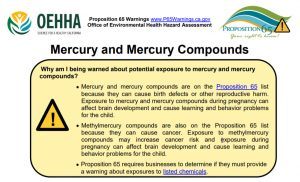Dr. Carey O’Rielly’s study of the bio-compatibility of dental materials for the last 20 years is integral to his approach in practicing dentistry. Dr O has spent years working with immune sensitive patients, and has studied literally hundreds of blood tests from Clifford Labs to find the most durable, safest and “user friendly” materials available today.
Biological Dentistry is an approach to dentistry that has as one of its focuses the safety of dental materials. In a toxic world it’s not advisable to add to our bodies’ toxic load through dentistry or create more stress to our immune system. Studies indicate that at some point at least 20% of dental patients develop sensitivity to one or more dental materials. Dr. O’Rielly has eliminated the dental materials that have shown to be not suitable to put into your teeth. These materials cause a reaction in the immune cells that protect our bodies from toxicity.
Are Metals the Worst Offenders?
 For most people, the answer is yes. Mercury, found in amalgam fillings, is the second or third most toxic element on the periodic table, depending on who you talk to. It is released from your fillings in minute amounts on a daily basis, but levels can build up in our systems over time. In addition there are other sources of mercury exposure including fish and the environment. This is not something to trifle with or take lightly.
For most people, the answer is yes. Mercury, found in amalgam fillings, is the second or third most toxic element on the periodic table, depending on who you talk to. It is released from your fillings in minute amounts on a daily basis, but levels can build up in our systems over time. In addition there are other sources of mercury exposure including fish and the environment. This is not something to trifle with or take lightly.
 The State of California through proposition 65 has identified mercury as causing birth defects, affecting brain development in utero, and resulting in learning and behavior problems in childhood. They also state that exposure to methylmercury compounds may increase the risk of cancer.
The State of California through proposition 65 has identified mercury as causing birth defects, affecting brain development in utero, and resulting in learning and behavior problems in childhood. They also state that exposure to methylmercury compounds may increase the risk of cancer.
 Some countries have even banned or restricted the use of mercury fillings. These include Sweden, Norway, Denmark and Germany.
Some countries have even banned or restricted the use of mercury fillings. These include Sweden, Norway, Denmark and Germany.
Other Metals to Avoid
Nickel is found in orthodontic brackets, wires and some crowns and has been identified by the State of California as causing cancer. If you are metal sensitive, I recommend eliminating all use of metal in the mouth. This includes metal alloys under porcelain crowns (or PFM crowns for short) and titanium implants.
 Here is a picture of old Porcelain Fused to Metal (PFM) Bridge. This is an old design where metal posts are cemented into the roots of the tooth. This is an approach that is no longer necessary as there are porcelains and resin cements that are strong enough to eliminate metal altogether.
Here is a picture of old Porcelain Fused to Metal (PFM) Bridge. This is an old design where metal posts are cemented into the roots of the tooth. This is an approach that is no longer necessary as there are porcelains and resin cements that are strong enough to eliminate metal altogether.
The other things about PFM’s is that they are not natural looking. You can usually pick out a PFM crown from a natural tooth because they are somewhat chalky looking or opaque. They have been called ‘Headlights’ or ‘Chicklets’ because they stand out when they are on the front teeth.
So What Dental Materials are Safe to Use?
While there are no perfect dental materials, the safest materials include:
 Porcelains for crowns and veneers
Porcelains for crowns and veneers- Composite or white fillings that don’t contain BPA or Bisphenol A
- In select cases gold with a little bit of platinum for hardness
- Plastics/acrylics and resins that are monomer free. Many people don’t realize that this is possible.
- Replacements for nickel braces and wires
At Integrative Dentistry, the Golden Rule is “First do no harm”, which is especially pertinent when it comes to dental materials.










